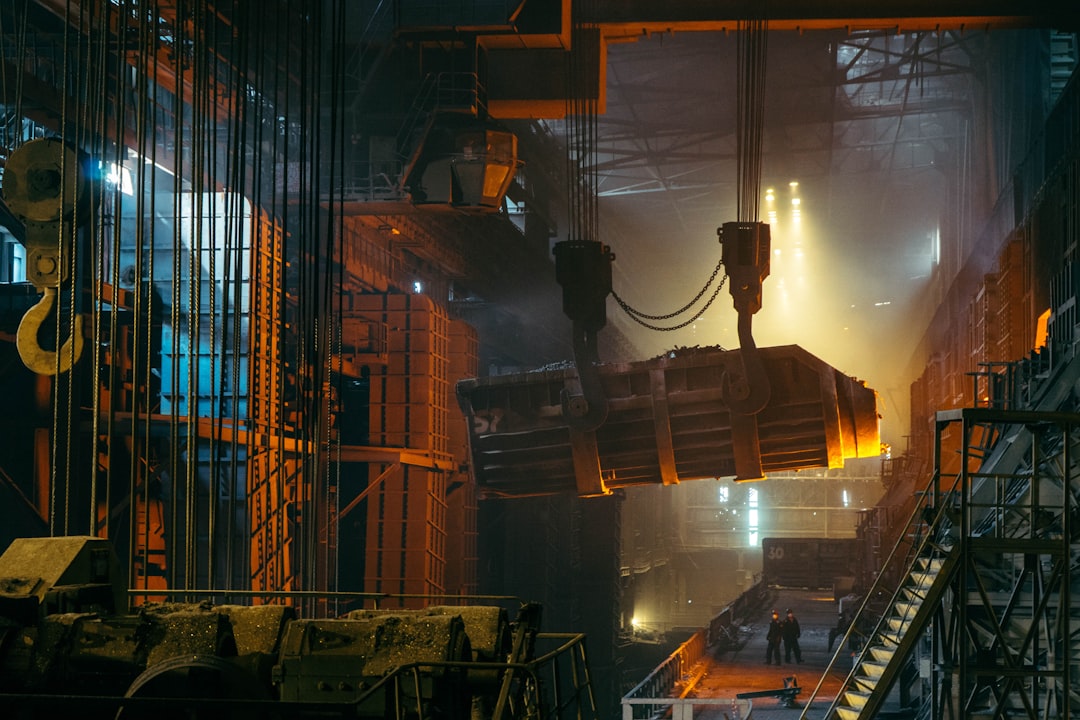body {
font-family: sans-serif;
line-height: 1.6;
}
h1, h2, h3 {
color: #333;
}
The steel industry, a cornerstone of global infrastructure and manufacturing, is undergoing a dramatic transformation. Digitalization is no longer a futuristic concept; it’s the driving force reshaping steel commerce, from raw material sourcing to final product delivery. This revolution promises increased efficiency, transparency, and profitability for all stakeholders involved.
Streamlining Steel Supply Chains with Digital Technologies
Traditional steel supply chains are notoriously complex, involving multiple intermediaries, lengthy lead times, and a lack of real-time visibility. Digitalization offers a powerful solution. Blockchain technology, for instance, can enhance traceability and transparency by creating a secure, immutable record of every stage in the steel’s journey, from mine to mill to customer. This combats counterfeiting and ensures the quality and origin of materials are readily verifiable. Furthermore, sophisticated supply chain management (SCM) software integrates data from various sources, providing real-time insights into inventory levels, production schedules, and transportation logistics. This enables better forecasting, optimized inventory management, and reduced delays, minimizing costly disruptions.
Data Analytics: Unveiling Hidden Insights in Steel Trading
The vast amounts of data generated throughout the steel supply chain represent a goldmine of untapped insights. Advanced data analytics techniques, including machine learning and artificial intelligence (AI), can analyze this data to identify trends, predict market fluctuations, and optimize pricing strategies. By analyzing historical sales data, market trends, and external factors like economic indicators, businesses can make more informed decisions about procurement, production, and sales. Predictive analytics can forecast demand, enabling proactive inventory management and preventing stockouts or overstocking. AI-powered algorithms can even optimize pricing strategies in real-time, maximizing profitability in a dynamic market.
E-commerce Platforms: Transforming Steel Trading into a Digital Marketplace
The rise of e-commerce platforms is revolutionizing how steel is bought and sold. Online marketplaces offer a convenient and efficient platform for steel producers, distributors, and buyers to connect, transact, and manage their businesses. These platforms provide access to a wider range of suppliers and buyers, increasing competition and potentially lowering prices. They also streamline the order processing, payment, and delivery processes, reducing administrative overhead and accelerating transactions. Features such as real-time inventory tracking, automated order management, and secure payment gateways enhance the overall efficiency and transparency of the trading process.
Enhancing Customer Relationships through Digital Engagement
Digitalization enables steel companies to engage with their customers more effectively. Online portals and mobile apps offer customers access to real-time information about their orders, inventory levels, and delivery schedules. This improved communication and transparency foster stronger customer relationships and builds trust. Furthermore, data analytics can help companies personalize their offerings and provide targeted support to individual customers. By understanding customer needs and preferences, companies can tailor their products and services to better meet market demands and improve customer satisfaction.
The Future of Digitalization in Steel Commerce: Emerging Trends
The digital transformation of the steel industry is an ongoing process. Emerging technologies like the Industrial Internet of Things (IIoT), digital twins, and augmented reality (AR) are poised to further revolutionize steel commerce. IIoT sensors embedded in equipment and machinery provide real-time data on performance and maintenance needs, enabling proactive maintenance and minimizing downtime. Digital twins create virtual representations of physical assets and processes, allowing for simulation and optimization before implementation in the real world. AR can enhance worker training and improve safety by overlaying digital information onto the physical environment.
The adoption of these technologies will lead to even greater efficiency, productivity, and sustainability in the steel industry. Companies that embrace digitalization will be better positioned to compete in a rapidly evolving global market.
Conclusion
Digitalization is not merely a trend; it’s a fundamental shift in how the steel industry operates. By embracing digital technologies and integrating them into their business models, steel companies can unlock significant benefits, including increased efficiency, improved profitability, and enhanced customer relationships. The future of steel commerce is undeniably digital, and those who adapt and innovate will thrive in this new era.
Tags: Digitalization, Steel Commerce, Steel Industry, Supply Chain Management, Data Analytics




